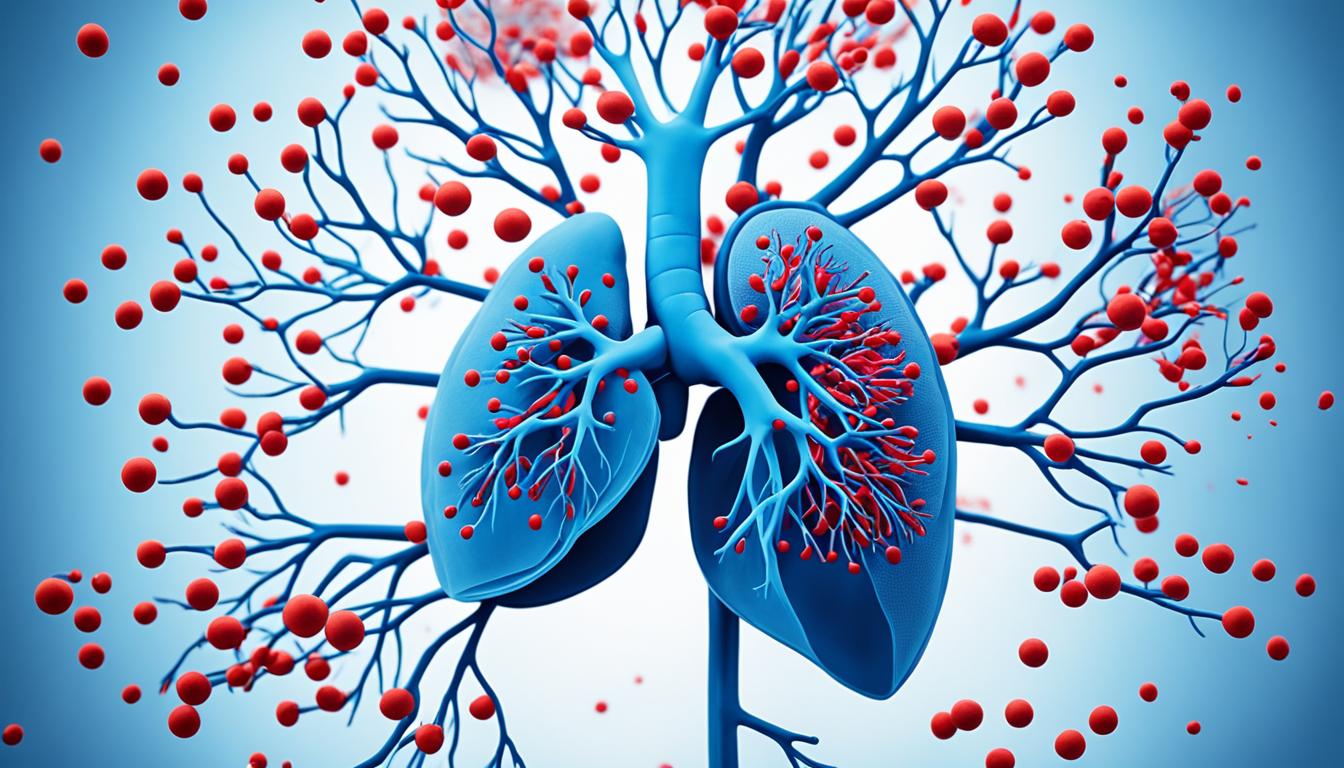Hepatic hemangioma (HH) is a common, non-cancerous liver tumor. It’s often found by chance during medical check-ups. This tumor can appear alone or in groups during an abdominal ultrasound. Its exact cause is still a mystery, but scientists are studying it. Most times, these tumors don’t show any symptoms. But, some people might feel pain or discomfort in their stomach’s upper right side.
If a tumor grows very large, it may cause serious problems. These issues can include a rare condition called Kasabach-Merrit syndrome or bleeding because the tumor breaks open.
Doctors use scans like ultrasounds, CT scans, or MRIs to find liver hemangiomas. Treatment varies based on the tumor’s size and if it’s causing any problems. Options include surgery, a method to block the tumor’s blood supply, heating the tumor with radio waves, or just watching it. Stem cell therapy is also under study as a new way to treat these tumors. It aims to help the liver heal and give better results to patients.
Key Takeaways:
- Liver hemangioma is the most common benign liver tumor, often found incidentally during physical examinations.
- Symptoms of liver hemangioma are usually absent, but they can include right upper quadrant abdominal pain, discomfort, and fullness.
- Giant liver hemangiomas can lead to life-threatening conditions such as Kasabach-Merrit syndrome or bleeding due to rupture.
- Diagnosis of liver hemangioma can be done through imaging tests like abdominal ultrasound, CT scan, or MRI.
- Treatment options for liver hemangioma include surgery, embolization, radiofrequency ablation, and observation.
- Stem cell therapy is being researched as a potential treatment approach for liver hemangioma.
Pathophysiology of Liver Hemangioma
The causes behind liver hemangioma are not completely known. Experts think it starts with a problem in the blood vessels. But, the real reason is still a mystery. Liver hemangiomas grow because the body tries to make more blood vessels. This process involves a key protein called vascular endothelial growth factor (VEGF).
Also, the hormones estrogen and progestin might make these growths bigger. This could explain why women often get liver hemangiomas. The growths might also get larger when women are pregnant or taking hormone treatments.
In liver blood vessel cells, certain proteins become active. One of these is VEGF, which is very important in making new blood vessels. Another, called mammalian target of rapamycin (mTOR), helps cells grow and stay alive. Together, these play a big role in the growth of liver hemangiomas.
There’s a lot we still don’t know about liver hemangiomas. Scientists are working to understand more. They want to figure out how birth defects, new blood vessel growth, hormones, and specific proteins cause these liver growths.
Symptoms and Complications of Liver Hemangioma
Liver hemangiomas are usually symptom-free. But, if the tumor grows larger than 5 cm, symptoms might appear. Abdominal pain is the top symptom for those with liver hemangiomas. This pain is usually in the right upper part of the stomach. Its intensity varies by the tumor’s size and where it is located.
Besides pain, symptoms like swelling and feeling full may happen with liver hemangioma. The tumor can make you feel like your stomach is full. After eating, your abdomen may bloat even more.
Sometimes, liver hemangiomas can lead to severe problems. Kasabach-Merritt syndrome is an example. It causes blood clotting and destroys platelets. If this happens, you may see signs of bleeding or a higher chance of the tumor bursting. This, however, is not common. Yet, it’s crucial to watch for any symptom changes and get help if you suspect these issues.
Even if liver hemangiomas usually don’t need treatment, it’s important to know about their possible symptoms and risks. If you have ongoing or intense stomach pain, swelling, or feel nauseous, see a doctor. They can offer the right assessment and advice.
Common Symptoms of Liver Hemangioma:
- Abdominal pain
- Distension
- Nausea
- Postprandial bloating
Complications of Liver Hemangioma:
- Kasabach-Merritt syndrome
- Bleeding
- Rupture
Breakthroughs in Stem Cell Therapy for Liver Hemangioma
Stem cell therapy is becoming a key player in regenerative medicine. It is being explored for liver hemangioma treatment. Hemangioma is a liver disease that may benefit from this new approach.
Stem cells can change into many cell types, including those in the liver. This makes them important for fixing liver tissue problems. While this treatment area is still being studied, it looks promising for improving liver hemangioma care.
But, there’s more to learn about how well stem cell therapy could work for liver hemangioma. We also need to figure out safe and good ways to use it. Many scientists are hard at work. They aim to use stem cells’ healing power as best as they can for liver conditions.

